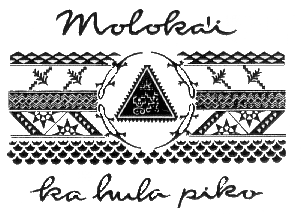To: hoosiermama
Even MORE questions; follow-the-money:
“....Most of its cash is at First Hawaiian Bank, with smaller amounts at other institutions, but not American Savings Bank because trustee Connie Lau also sits on the board of directors of HEI Inc., that bank’s parent company. The competition for that money is not insignificant in a time of extremely low-interest-payout and big demand for new mortgages. ...”
Cash location/what bank
Who else was a trustee and on a board of directors of a parent company, and thus excluded?
What/Where other banks besides First Hawaiian had the cash?
Why was most of the cash at one bank?
When were there any cases where a trustee was also on a bank board of directors?
258 posted on
02/19/2014 9:38:48 PM PST by
WildHighlander57
((WildHighlander57, returning after lurking since 2000))
To: WildHighlander57
On January 18, 1778, the English explorer Captain James Cook becomes the first European to discover the Hawaiian Islands when he sails past the island of Oahu. Two days later, he landed at Waimea on the island of Kauai and named the island group the Sandwich Islands, in honor of John Montague, who was the earl of Sandwich and one his patrons.
In 1768, Cook, a surveyor in the Royal Navy, was commissioned a lieutenant in command of the H.M.S. Endeavor and led an expedition that took scientists to Tahiti to chart the course of the planet Venus. In 1771, he returned to England, having explored the coast of New Zealand and Australia and circumnavigated the globe. Beginning in 1772, he commanded a major mission to the South Pacific and during the next three years explored the Antarctic region, charted the New Hebrides, and discovered New Caledonia. In 1776, he sailed from England again as commander of the H.M.S. Resolution and Discovery and in 1778 made his first visit to the Hawaiian Islands.
Cook and his crew were welcomed by the Hawaiians, who were fascinated by the Europeans’ ships and their use of iron. Cook provisioned his ships by trading the metal, and his sailors traded iron nails for sex. The ships then made a brief stop at Ni’ihau and headed north to look for the western end of a northwest passage from the North Atlantic to the Pacific. Almost one year later, Cook’s two ships returned to the Hawaiian Islands and found a safe harbor in Hawaii’s Kealakekua Bay.
It is suspected that the Hawaiians attached religious significance to the first stay of the Europeans on their islands. In Cook’s second visit, there was no question of this phenomenon. Kealakekua Bay was considered the sacred harbor of Lono, the fertility god of the Hawaiians, and at the time of Cook’s arrival the locals were engaged in a festival dedicated to Lono. Cook and his compatriots were welcomed as gods and for the next month exploited the Hawaiians’ good will. After one of the crewmembers died, exposing the Europeans as mere mortals, relations became strained. On February 4, 1779, the British ships sailed from Kealakekua Bay, but rough seas damaged the foremast of the Resolution, and after only a week at sea the expedition was forced to return to Hawaii.
The Hawaiians greeted Cook and his men by hurling rocks; they then stole a small cutter vessel from the Discovery. Negotiations with King Kalaniopuu for the return of the cutter collapsed after a lesser Hawaiian chief was shot to death and a mob of Hawaiians descended on Cook’s party. The captain and his men fired on the angry Hawaiians, but they were soon overwhelmed, and only a few managed to escape to the safety of the Resolution. Captain Cook himself was killed by the mob. A few days later, the Englishmen retaliated by firing their cannons and muskets at the shore, killing some 30 Hawaiians. The Resolution and Discovery eventually returned to England.
259 posted on
02/19/2014 9:43:53 PM PST by
Fred Nerks
(fair dinkum)
To: WildHighlander57
The central design depicts this spiritual continuity with the mo'o arranged in a circle. The triangle depicts a Hawaiian value called "Lokahi," which is symbolic of a balance between man, nature, and God. Petroglyphs within the triangle portray a man and woman in dance. In the uppermost part of the triangle is a rising sun with a dot in the center symbolizing the piko of the hula.

Beneath the circle is a motif depicting water, while at the top, the triangles represent fire. In the real world, water and fire are the two elements that cannot be mixed, but the spiritual essence of these elements mix in the hula. The ancient kumu hula of Molokai stressed to their students that they should dance with the fluidity of water and with the spark of fire.
The middle row of diamonds, is a design called by the Hawaiians "na maka ke akua," or "eyes of the gods." Eyes are symbolic of the past, because our ancestors look upon us and guide us in this life. Eyes also represent the living, as we look back upon the paths of our ancestors for inspiration and guidance.
The hula provides a means for us to look back to the works of our ancestors through its movements, motions and chants.
Above the "na maka ke akua" design are ferns representing the greenery worn by the dancers and below is the half-circle-point motif representing the rays of the sun rising in the east.
To the early Hawaiians, the rising sun was symbolic of constant renewal and rebirth in the hula.
260 posted on
02/19/2014 9:47:38 PM PST by
Fred Nerks
(fair dinkum)
To: maggief; null and void
ping to info “follow the money”
264 posted on
02/19/2014 9:53:06 PM PST by
WildHighlander57
((WildHighlander57, returning after lurking since 2000))
FreeRepublic.com is powered by software copyright 2000-2008 John Robinson
